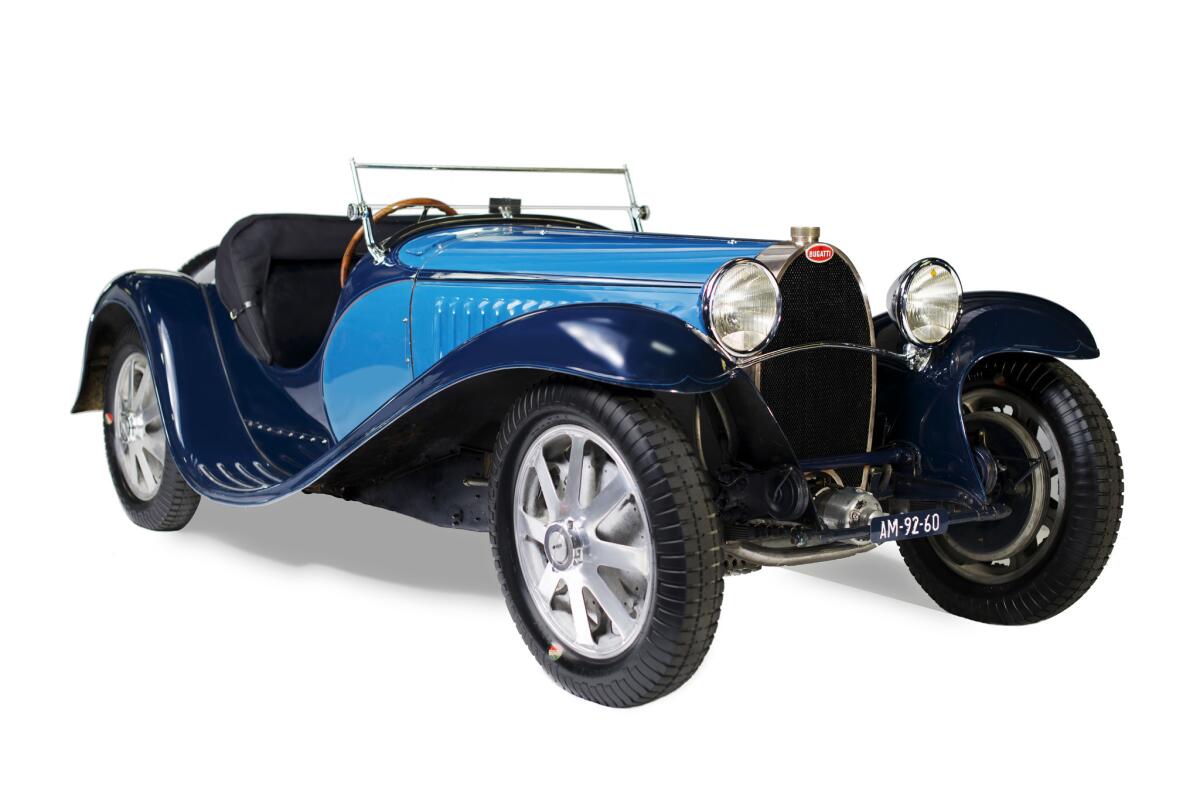‘Art of Bugatti’ exhibit shows off generations of talent from the car designer’s family

- Share via
The Petersen Automotive Museum will host a new “Art of Bugatti” exhibit, beginning Oct. 23 and running through October 2017.
The multidiscipline exhibit will feature automobiles, paintings, furniture, sculpture and silver work from three generations of the Italian-French family.
The bulk of the exhibit will be examples of the automotive art from which the family drew their fame, and the bulk of those belong to local automobile collector — and Petersen board chairman — Peter Mullin.
They include a vintage Type 55 and Type 41 Royale, a modern EB110 and Chiron, and a Type 57 Atlantic — believed by many auto enthusiasts to represent the pinnacle of French Art Deco automotive design.
Alongside the cars, most designed by Ettore Bugatti, will be furniture designed by his father, Carlo Bugatti, sculptures by his brother Rembrandt Bugatti, and paintings by his daughter Lidia Bugatti.
The Chiron is on loan from Volkswagen, which since 1998 has owned the classic brand.
But most of the other vehicles, and many of the artworks in the display, ordinarily reside in the Mullin Automotive Museum in Oxnard. Some of the art is also being loaned to the Petersen by the Sladmore Gallery in London.
“We hoped to have selected the best of the best,” Mullin said.
The celebrated, multigenerational design family was also multinational.
Ettore was born in Milan to a family that had already seen two generations of artistic expression. (His grandfather was an architect.) As a young man, he took a design job in Germany, in a town that later became part of France. He went on to establish a car company in his own name, and to design winning race cars, as well as airplanes and even locomotives.
Bugatti’s son Jean followed him into the family business, and is credited with designing the famed Atlantic, but was killed in 1939 at the age of 30 while testing a race car. Ettore died in 1947. Another son, Roland, later helped produce the Bugatti Type 101.
Mullin said his fascination with Bugatti automobiles began with an interest in a rival French Art Deco brand — a Chapron-bodied Delahaye 135 MS that he fell in love with more than 35 years ago. (I myself confess to a terrible weakness for the 1939 Delahaye Type 165, one of which Mullin has in his collection.)
Mullin’s first Art Deco purchase was a 1948 Talbot-Lago Record, which was later a prize winner at the Pebble Beach Concours d’Elegance. From there, he began to acquire other vehicles from the same period, eventually assembling a 200-vehicle collection of cars designed or built by Bugatti, Delahaye, Talbot-Lago, Hispano-Suiza, Voisin and Delage.
In the collection, leaving its spot at the Petersen to make room for the incoming Bugattis, is the 1937 Talbot-Lago T150-C “Goutte d’Eau” (or “Tear Drop”) that in August won the inaugural Peninsula Classics Best of the Best award.
The award honored the judges’ favorite car among those that had won top prize at the preceding year’s top auto shows — the Pebble Beach Concours d’Elegance, the Quail Motorsports Gathering, the Amelia Island Concours d’Elegance, Italy’s Cavallino Classic and England’s Concours of Elegance.
To Bugatti head of design Achim Anscheidt, there is a clear line between classics and the Chiron.
“The Type 57 Atlantic is the most important stylistic inspiration of the marque’s history,” Anscheidt said. “As we often say, ‘In order to look forward, you must first look back.’ The five riveted crease lines of the Atlantic find a new interpretation with the Chiron’s defining fender shapes and the defining roofline across the center of the car.”
ALSO
Review: Rhino GX is a luxury SUV fit for a warlord
Takata air bag blamed for woman’s death in Riverside County crash
We cruise Malibu Canyon with the writer of the ‘Seinfeld’ ‘Soup Nazi’ episode







